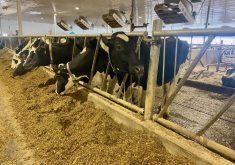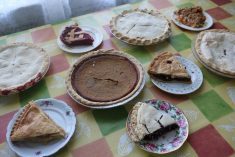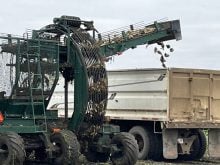HEARNE, Sask. Ñ Feed suppliers often quote prices in dollars per tonne. For many farmers who work in bushels or pounds, figuring out costs can be difficult.
That’s the situation Deanna Aikens found herself in two years ago. Sitting in her farm home with her fouth baby, trying to buy feed for the family’s livestock operation, she was frustrated by trying to convert measurements for different grains to compare prices.
“I didn’t grow up on a farm,” said the Regina-raised Aikens. “I didn’t know the conversions. I had (conversion) tables all over the house.”
Read Also

Accurate accounting, inventory records are important
Maintaining detailed accounting and inventory records is not just a best practice; it’s a critical component of financial health, operational efficiency and compliance with programs like AgriStability.
But she soon found that most farmers were in the same boat. She looked on the internet but couldn’t find anyone supplying a hand-held calculator for this purpose.
She spent the next two years on the internet and telephone developing her now patented and recently available Agricultural Conversion Calculator.
It converts from pounds, bushels or tonnes for 19 different crops with the help of a crop button on the calculator. Each crop is assigned to a number on the keypad. Some crops with the same weight, flax and rye, for example, share a number.
Pressing the crop button and the corresponding number for the crop ensures the correct calculation for the weight of that crop.
It also has directional buttons so the measurements can be calculated upward or downward.
Using contacts provided by local manufacturers, Aikens connected with a Hong Kong plastics manufacturer who could make the calculators at a competitive price.
“It took me about a week to realize I wasn’t going to be manufacturing this in Canada,” said Aikens, who also works as an investment specialist with Canadian Imperial Bank of Commerce.
The calculator came on the market last fall. Major grain and farm equipment companies like Cargill and John Deere and financial institutions like CIBC and Farm Credit Canada placed orders for their staff and customers. It’s also available at retailers like Peavey Mart and Aikens hopes to place it in retail co-ops.
The first order was for 25,000 and there were about 6,000 left in mid-January, she said.
She is now setting up distributors in other provinces and will attend a couple of American events later this winter to get her product into the United States.
She’s doing all this while nursing a fourth child, born in October.
Deanna and Geoff have been on the farm part time since 1998 and full time since 2001.
They met while attending the University of Saskatchewan, where Geoff earned an agriculture degree and Deanna obtained arts and commerce degrees, majoring in finance and political science.
After working and living near Winnipeg for a few years, they returned to the Aikens’ farm to help when Geoff’s dad suffered an illness.
“I said, ‘there’s no way I’m living on a farm’,” Deanna recalled, as they settled in Moose Jaw at first.
“Now, I’d never go back. It’s the people out here. Everyone looks out for everyone. I’m not scared to live here and it’s a really good place to raise kids.”
The Aikens family includes six-year-old Breanna, Delaney, 4, Colton, 2, and three-month-old Alexa.
When they moved there, the farm was a 2,000-acre grain operation with 50-60 cows, Geoff said.
“Now, we seed 4,200 acres, have about 200 cows and 3,000 pigs (at a time),” he said.
The diversification began in 1998 when they built a 400-head feedlot. The next year, they added 12 canvas-covered hoop barns for feeder pigs, then another four barns.
“My grandpa told me I was crazy,” Geoff said. “But they’ve never been empty.”
He said he knew nothing about pigs and the learning curve was steep, but the canvas-covered barns were a fraction of the cost of conventional barns and if the venture didn’t work, the structures could be used for other things.
“It was a way for us to get on to the farm and start generating some income right away,” said Geoff.
The weaner pigs come to the farm when they weigh 50 lb. and are fed to 240 lb. They are slaughtered at Worldwide Pork in Moose Jaw and shipped to Japan.
More recently, the Aikens built a feed mill on their property in an effort to control feed costs.
Geoff said they might reduce their cow herd a bit this year as well.
They employ three people full time and one part time across the three farm sectors.
“We employed all of Hearne at one point,” laughed Deanna.
She does the books for all of the operations.
“I’m the bean counter, he’s the production side of things,” she said.
Deanna added she’s working on another invention but can’t yet share the details.















